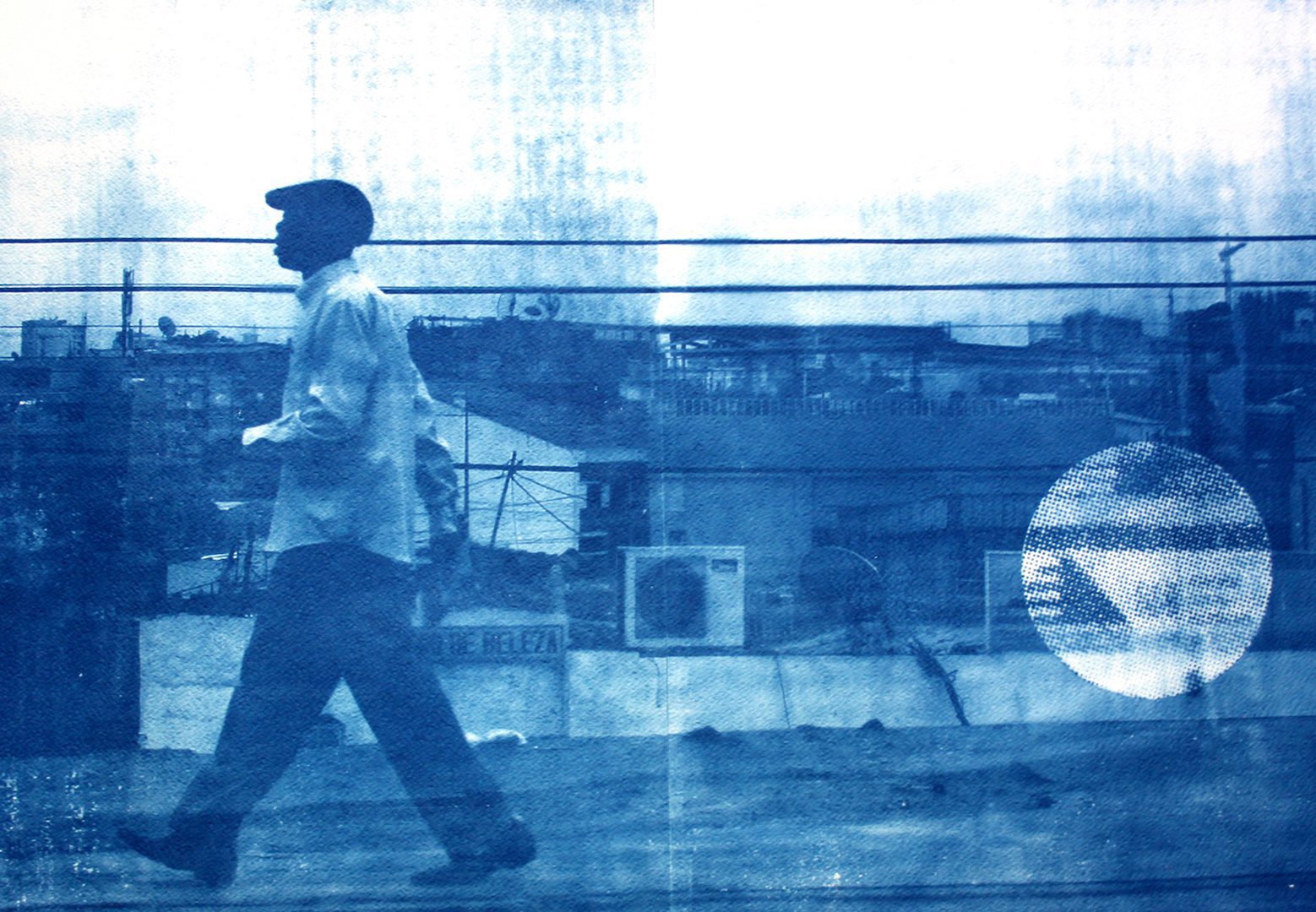Notre auteur Tanja Schreiner a rencontré Marie-Ann Yemsi, commissaire d’exposition invitée pour le focus africain dans le cadre de le salon d'art Art Paris Art Fair.

Delio Jasse, Terreno Ocupado , 2014. Photography. Courtesy of the artist and Tiwani Contemporary
Du 30 mars au 2 avril, le Grand Palais à Paris ouvre ses portes à Art Paris Art Fair, l’une des plus importantes foires d’art contemporain en Europe. Cette année, elle accueille 139 galeries de 29 pays et met à l’honneur le continent africain. Rencontre avec Marie-Ann Yemsi, commissaire d’exposition invitée pour ce focus africain.
Tanja Schreiner: D’où vient votre passion pour la création artistique ?
Marie-Ann Yemsi: Très jeune, mes parents m’ont emmenée voir des expositions et élevée en musique. J’ai grandi avec l’idée que l’art et la culture en général étaient une ouverture sur le monde. Durant tout mon parcours scolaire et universitaire en France, j’ai été frappée par l’absence d’enseignement sur l’Afrique. Pourtant depuis plusieurs siècles, les liens avec ce continent sont forts. Cela m’a intriguée et donné envie de développer mes activités dans cette direction. Il faut ajouter que je suis originaire de ce continent. Cette partie de moi était en quelque sorte un appel. J’ai donc créé ma structure Agent Créatif(s), un atelier de conseils en art contemporain et de production culturelle qui s’oriente particulièrement vers des artistes du continent africain et des diasporas.
TS: En France, sommes-nous en retard par rapport à d’autres pays pour ce qui est de l’intérêt porté aux artistes du continent africain ?
MAY: On y est vraiment très en retard. Cette situation vient de l’absence de regard en France sur le continent africain depuis des décennies. À force de ne pas vouloir regarder l’histoire en face, ce continent a été tenu à distance. Et quand on tient l’autre à distance,sans le comprendre, on en a une vision fantasmée et exotisée. C’est un processus qui touche aussi les artistes. Je pense qu’aujourd’hui en France, on assiste à une sorte de rattrapage, mais la route est encore très longue. J’espère qu’à travers la rencontre avec ces artistes contemporains qui va être dense et fertile au printemps à Paris – avec Art Paris Art Fair et six autres établissements qui mettent à l’honneur le continent africain – on va s’apercevoir que l’Afrique est constituée d’une grande diversité de cultures et qu’elle n’est pas ce bloc auquel elle est si souvent réduite.
.
.
TS: Quelles sont vos ambitions pour cette édition d’Art Paris Art Fair ?
MAY: De montrer d’autres perspectives sur les artistes de ce continent et surtout de favoriser leur visibilité. C’est une belle occasion de présenter des artistes qui, sinon, sont invisibles en France. Par ailleurs, le regard dans ce pays s’est souvent porté vers les mêmes artistes et en particulier ceux de la zone francophone. Avec ce focus, j’ai souhaité offrir un éclairage plus ample sur le reste du continent. Mais j’insiste sur le fait que celui-ci n’est pas du tout une cartographie de la création contemporaine du continent africain. L’idée est de rendre visibles des voix talentueuses, qu’elles soient sur le continent ou en Europe, qu’elles soient représentées par des galeries africaines ou européennes.
TS: Quelles galeries seront présentées dans le focus africain ?
MAY: Le panorama des galeries que l’on va montrer reflète la dynamique qui existe aujourd’hui sur le continent africain. Parmi la vingtaine de galeries du focus, beaucoup d’entre elles sont des jeunes galeries. Nous avons des galeries provenant aussi bien du Nord que du Sud du continent, comme Loft Art Gallery du Maroc, Espaço Luanda Arte d’Angola, Afriart Gallery basée à Kampala en Ouganda ou encore Art Twenty One du Nigéria. Seront bien entendu présents des galeristes européens tels que Tyburn Gallery et Tiwani Contemporary qui font un travail remarquable à Londres. Je suis aussi contente de la présence d’October Gallery, une galerie qui assure la promotion des artistes de ce continent et des diasporas depuis très longtemps déjà.
TS: Cette année, les galeries du focus ne seront pas regroupées comme dans les dernières années sur une plate-forme. Pourquoi ?
MAY: Je voulais vraiment sortir de cette idée du ghetto, et éviter de recréer encore des frontières. Ces galeries font le même travail que leurs confrères du monde entier. Elles sont donc réparties dans les différents secteurs sur la base de leur choix.
TS: Pouvez-vous nous en dire plus sur le secteur « Promesses » ?
MAY: Ce secteur est dédié aux galeries prometteuses qui ont moins de six ans. Elles sont invitées à montrer un maximum de trois artistes. La sélection 2017 est à 100 % internationale avec des enseignes en provenance d’Abidjan, Amsterdam, Bogota, Bratislava, Genève, Lagos, Londres, Luanda ou Rome. Les coûts des stands sont subventionnés à 45 % par les organisateurs de la foire pour permettre à des jeunes galeries de pouvoir financer leur présence.
TS: Qu’avez-vous comme prochain projet ?
MAY: J’ai été très heureuse et honorée d’être nommée commissaire artistique pour les Rencontres de Bamako – Biennale africaine de la photographie qui aura lieu à la fin de cette année. C’est un projet enthousiasmant sur lequel je travaille avec les équipes maliennes sous la direction de Samuel Sidibé et en coopération avec l’Institut français, opérateur de l’évènement au côté du Mali. C’est un rendez-vous qui me tient à cœur parce que c’est un projet panafricain qui témoignera de l’énergie qu’il y a actuellement en termes de création et de production culturelle en Afrique.
.
From March 30 to April 2, 2017 the Grand Palais in Paris is opening its doors to Art Paris Art Fair.
Tanja Schreiner réside à Paris où elle travaille comme journaliste culturelle indépendante pour les médias internationaux.
More Editorial